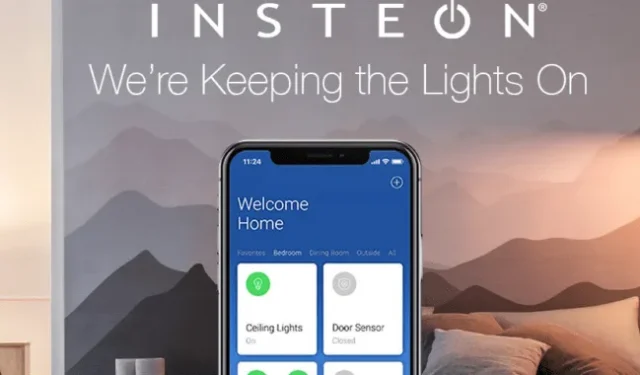Shameful: Insteon looks dead, as do its users’ smart homes

Smart home company Insteon has disappeared.
The entire company appears to have suddenly shut down just before the weekend, disrupting users’ cloud-dependent smart home settings without warning. Users say the service has been down for three days, despite the company status page saying “All services online.”The company’s forums do not work, and no one responds to users on social networks.
As IoT reporter Stacey Higginbotham points out , senior Insteon executives, including CEO Rob Lilleness, have removed information about the company from their LinkedIn accounts. While this article was being written, Lillenes also removed his name and photo from his LinkedIn profile. This appears to be the biggest communication that longtime Insteon customers will receive.
Insteon is (or more likely “was”) a smart home company that made a variety of internet-connected lights, thermostats, plugs, sensors, and of course, the Insteon Hub. The company was based on its own Insteon network protocol, which was a competitor to more popular and licensed alternatives such as Z-Wave and Zigbee. Insteon’s “unique and patented dual network technology”used both the 900MHz wireless protocol and the Powerline network, which the company says created a more reliable network than just wireless. Insteon Hub will connect all your equipment to the Internet and allow you to use the Insteon app.
Technically, Insteon has a parent company, Smartlabs Inc. , although Smartlabs and Insteon seem to share the same executives. Smartlabs Inc. owns the smarthome.com website, which mainly sells Insteon hardware, and actually licenses the Nokia name for “Nokia Smart Lighting”, which appears to be just a rebrand of Insteon hardware.
In 2017 Smartlabs Inc. was acquired by Richmond Capital Partners, a private equity firm founded by Rob Lilleness, and Lilleness was named CEO. Insteon has removed the blog post about this acquisition from their website, but archive.org still has the announcement. In 2015, Insteon became one of two launch partners for Apple’s HomeKit.
When its servers are down, the Insteon app seems useless, and automation and user schedules stop working. Many of Insteon’s wall switches were actual electrical switches, so the worst thing that can happen is that they become blunt switches. Even without servers and the Insteon app, the Insteon protocol has been reverse engineered for some time, so you can manage devices locally without an app. It is also possible to transfer this local control to another platform controller hub, bringing back smart functions and remote access to your smart home.
Home Assistant is probably the most popular way to upgrade – it’s an open source home server that you control, so nothing like this will ever happen to you again. OpenHab is another open source option with Insteon support, and the Homebridge plugin can make Insteon work with Apple HomeKit.
If you’re a rejected Insteon user looking to move your hardware to some other system, whatever you do, don’t factory reset your Insteon Hub. Apparently, communicating with the Insteon servers is a key step in the initial setup, so this might not work now. Home Assistant has already updated its Insteon page with a warning to users. It says:
Insteon has closed and disabled its cloud since April 2022. Do not, under any circumstances, reset the device to factory settings, as it cannot be restored.
Users of the /r/insteon subreddit are processing their collective grief right now, and since the official forums are dead, this is probably the biggest community that can ask for help. Everyone is in the same boat and exploring many transfer options.
Closing a company, especially closing a smart home company, is never easy. Many clients have invested hundreds of dollars in this previously multi-million dollar ecosystem; Closing the store suddenly like a bunch of one-night stands would be an unacceptable way to treat paying customers. I hope there will be more communication.
The company could have given everyone a month’s notice that it was shutting down. It may have open source code or hosted documentation to help users get started on some other system. This could give forum members the opportunity to organize themselves on some other site.
But that did not happen. Instead, Insteon committed the cardinal sin of smart home companies: abandoning customers and their equipment in the lurch.
Leave a Reply